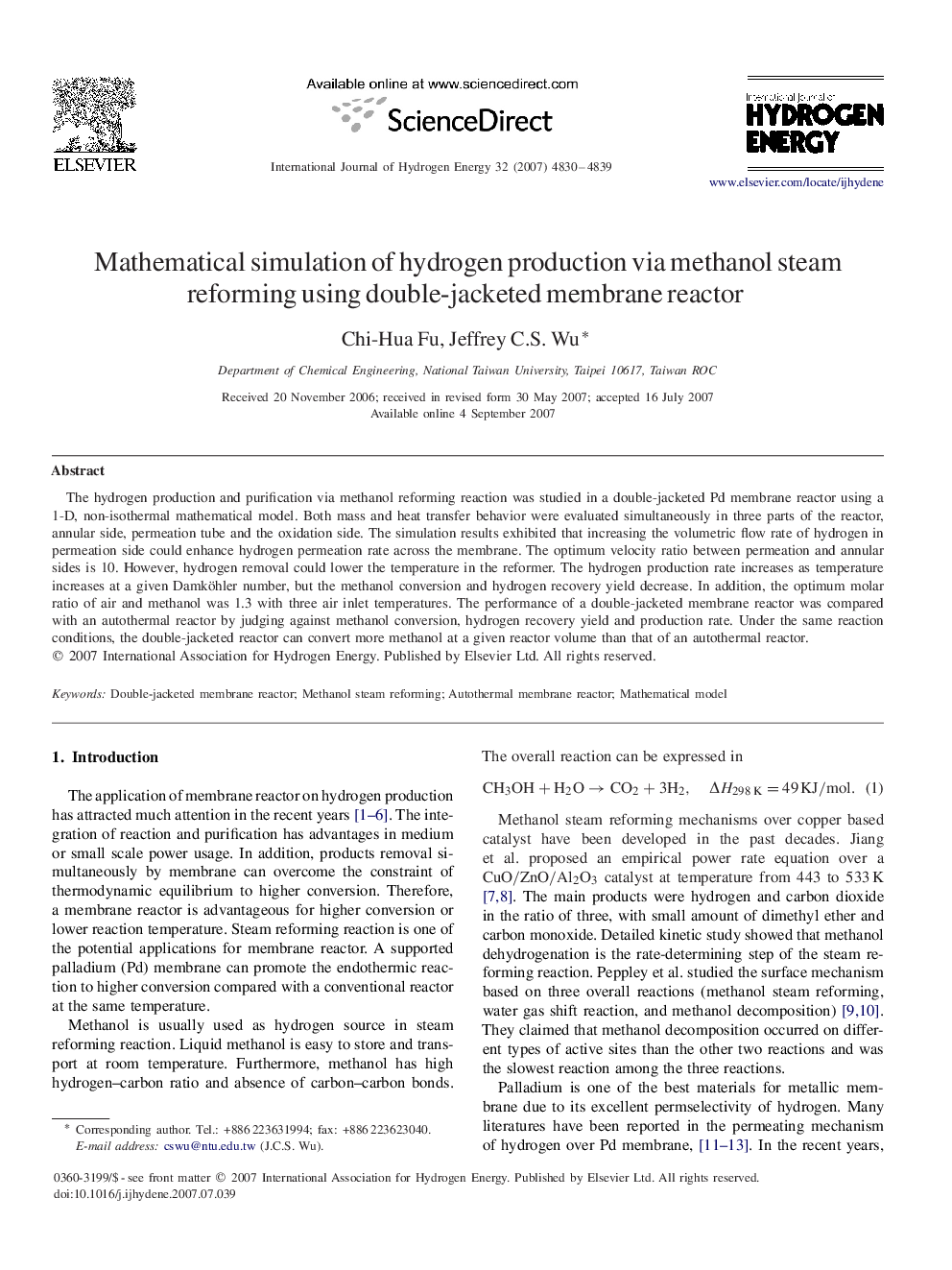| Article ID | Journal | Published Year | Pages | File Type |
|---|---|---|---|---|
| 1283772 | International Journal of Hydrogen Energy | 2007 | 10 Pages |
The hydrogen production and purification via methanol reforming reaction was studied in a double-jacketed Pd membrane reactor using a 1-D, non-isothermal mathematical model. Both mass and heat transfer behavior were evaluated simultaneously in three parts of the reactor, annular side, permeation tube and the oxidation side. The simulation results exhibited that increasing the volumetric flow rate of hydrogen in permeation side could enhance hydrogen permeation rate across the membrane. The optimum velocity ratio between permeation and annular sides is 10. However, hydrogen removal could lower the temperature in the reformer. The hydrogen production rate increases as temperature increases at a given Damköhler number, but the methanol conversion and hydrogen recovery yield decrease. In addition, the optimum molar ratio of air and methanol was 1.3 with three air inlet temperatures. The performance of a double-jacketed membrane reactor was compared with an autothermal reactor by judging against methanol conversion, hydrogen recovery yield and production rate. Under the same reaction conditions, the double-jacketed reactor can convert more methanol at a given reactor volume than that of an autothermal reactor.
